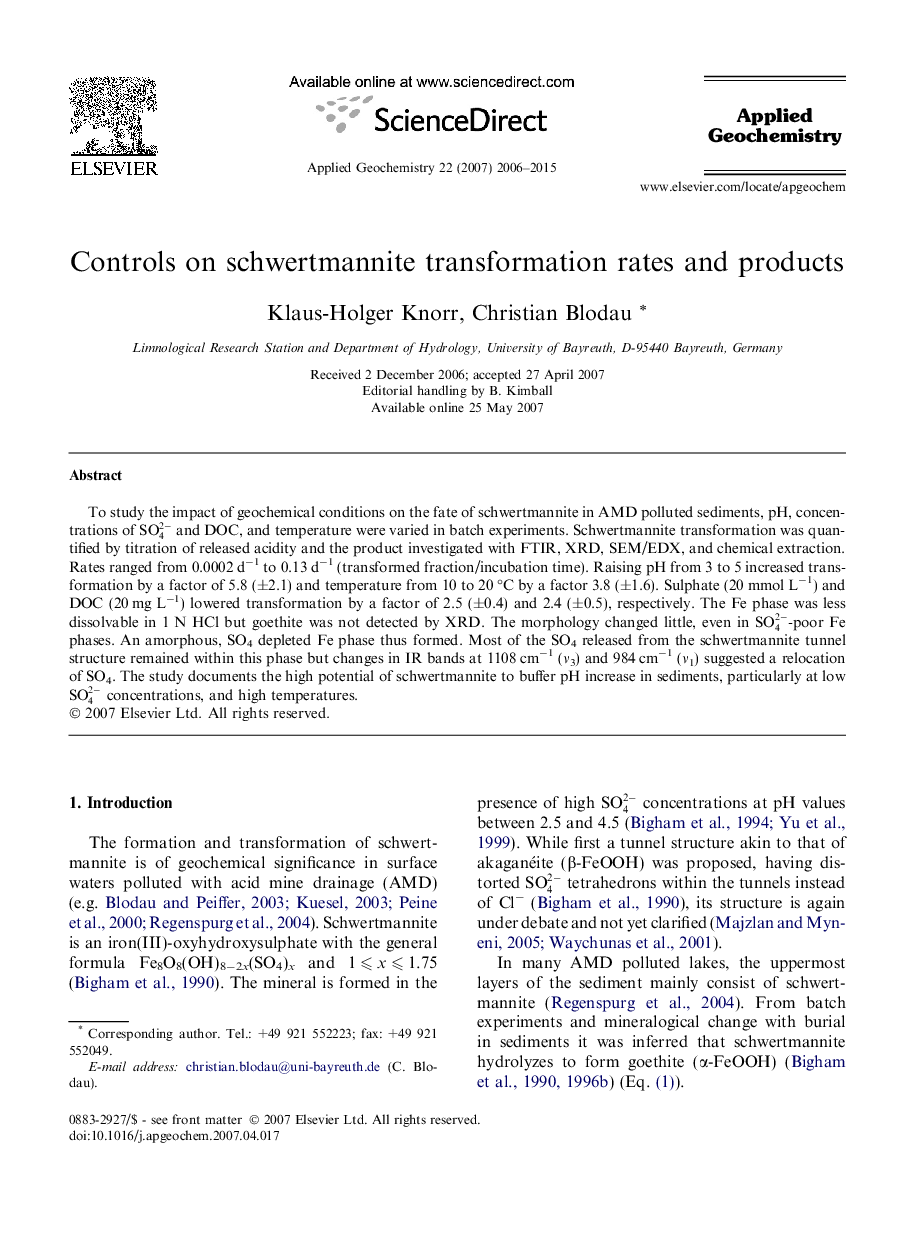| کد مقاله | کد نشریه | سال انتشار | مقاله انگلیسی | نسخه تمام متن |
|---|---|---|---|---|
| 4437579 | 1310730 | 2015 | 10 صفحه PDF | دانلود رایگان |

To study the impact of geochemical conditions on the fate of schwertmannite in AMD polluted sediments, pH, concentrations of SO42- and DOC, and temperature were varied in batch experiments. Schwertmannite transformation was quantified by titration of released acidity and the product investigated with FTIR, XRD, SEM/EDX, and chemical extraction. Rates ranged from 0.0002 d−1 to 0.13 d−1 (transformed fraction/incubation time). Raising pH from 3 to 5 increased transformation by a factor of 5.8 (±2.1) and temperature from 10 to 20 °C by a factor 3.8 (±1.6). Sulphate (20 mmol L−1) and DOC (20 mg L−1) lowered transformation by a factor of 2.5 (±0.4) and 2.4 (±0.5), respectively. The Fe phase was less dissolvable in 1 N HCl but goethite was not detected by XRD. The morphology changed little, even in SO42--poor Fe phases. An amorphous, SO4 depleted Fe phase thus formed. Most of the SO4 released from the schwertmannite tunnel structure remained within this phase but changes in IR bands at 1108 cm−1 (ν3) and 984 cm−1 (ν1) suggested a relocation of SO4. The study documents the high potential of schwertmannite to buffer pH increase in sediments, particularly at low SO42- concentrations, and high temperatures.
Journal: Applied Geochemistry - Volume 22, Issue 9, September 2007, Pages 2006–2015